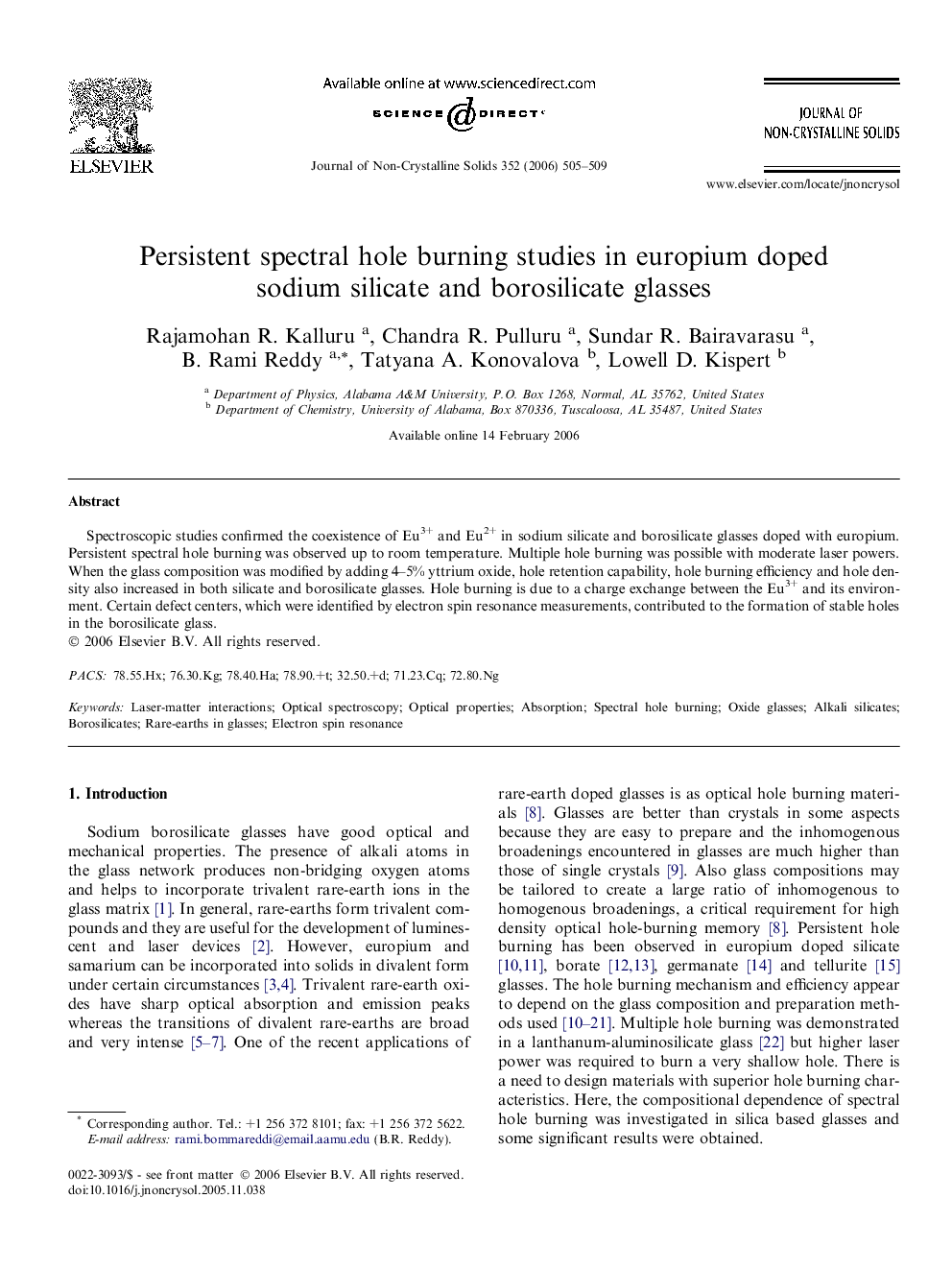| Article ID | Journal | Published Year | Pages | File Type |
|---|---|---|---|---|
| 1486491 | Journal of Non-Crystalline Solids | 2006 | 5 Pages |
Abstract
Spectroscopic studies confirmed the coexistence of Eu3+ and Eu2+ in sodium silicate and borosilicate glasses doped with europium. Persistent spectral hole burning was observed up to room temperature. Multiple hole burning was possible with moderate laser powers. When the glass composition was modified by adding 4–5% yttrium oxide, hole retention capability, hole burning efficiency and hole density also increased in both silicate and borosilicate glasses. Hole burning is due to a charge exchange between the Eu3+ and its environment. Certain defect centers, which were identified by electron spin resonance measurements, contributed to the formation of stable holes in the borosilicate glass.
Keywords
Related Topics
Physical Sciences and Engineering
Materials Science
Ceramics and Composites
Authors
Rajamohan R. Kalluru, Chandra R. Pulluru, Sundar R. Bairavarasu, B. Rami Reddy, Tatyana A. Konovalova, Lowell D. Kispert,
